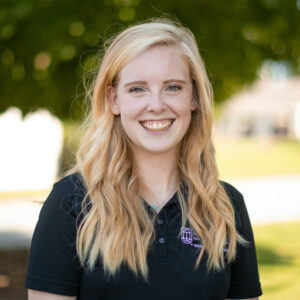During a disaster, many people turn to social media seeking information. But communicating during disasters is challenging, especially using an interactive environment like social media where misinformation can spread easily.
Now, University of Georgia researchers have developed a social media tool to better help local emergency managers disperse information to community members during a disaster.
Led by recent graduate Dionne Mitcham, a team from the Institute for Disaster Management at UGA’s College of Public Health has developed a communication framework that local emergency managers could adopt to support crisis communications.
The proposed framework is a spoke-and-wheel design that utilizes community-based public information officers (PIO), emergency management professionals, and/or trained volunteers to communicate information from the operations team and command and control team to the public, traditional media and other stakeholders.
The framework aims to aid local emergency management agencies that lack access to resources state and federal emergency management organizations typically have, such as risk communicators, social media strategists and full-time PIOs.
“There is a lack of both communication frameworks and guidance on the use of social media as a crisis communication tool that was tailored specifically for use on the local level,” said Mitcham. “The framework uniquely leverages local emergency management agencies’ close relationships with stakeholders to help amplify the distribution of uniform disaster-related messaging via social media.”
Incorporating social media into a local emergency management department’s communication plan allows emergency managers and PIOs to directly engage in quick information sharing with the public. This improves the efficiency of information dispersal and prevents potential misrepresentation of information due to the information being posted directly from the source, said the authors.
Local emergency management departments have a unique opportunity to establish and nurture relationships within a community before disaster strikes. These relationships help to reach the whole community when a disaster happens.
“By collaborating with diverse community organizations, the hub framework assists local governments in understanding and meeting the actual needs of the whole community in real time. Formalizing these partnerships prior to a disaster ensures that all members of the community will receive urgent information,” said co-author Morgan Taylor, a doctoral student in the department of epidemiology and biostatistics and research assistant with the Institute for Disaster Management.
There are pitfalls when it comes to using social media. Platforms are not designed to support emergency response and crisis communication: Messages containing critical information can get lost in the influx of messages. False information can spread quickly. Sometimes different community stakeholders can have conflicting messages.
“My co-authors and I hope local emergency managers and their teams use this article as a starting point for considering how to get stakeholders involved in the distribution of crisis communications. In addition, we want to show that uniform distribution of communication messages via social media can be utilized at any level of emergency management – from local to federal,” said Mitcham.
The full framework is detailed in the team’s paper, published in the International Journal of Environmental Research and Public Health.
Read on UGA Today.
– Alexandra Steele
Posted on January 7, 2022.








